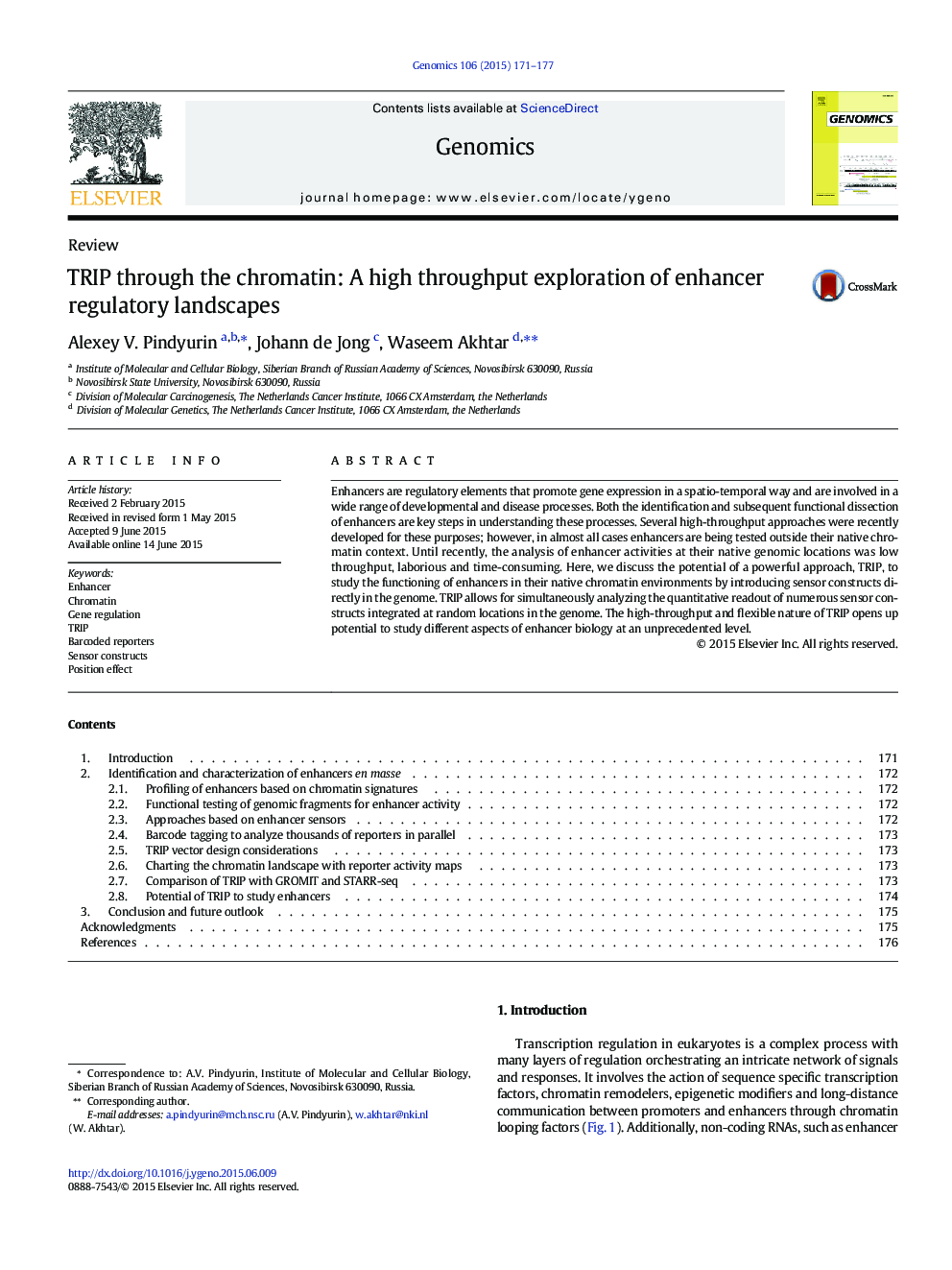| Article ID | Journal | Published Year | Pages | File Type |
|---|---|---|---|---|
| 5907720 | Genomics | 2015 | 7 Pages |
Abstract
Enhancers are regulatory elements that promote gene expression in a spatio-temporal way and are involved in a wide range of developmental and disease processes. Both the identification and subsequent functional dissection of enhancers are key steps in understanding these processes. Several high-throughput approaches were recently developed for these purposes; however, in almost all cases enhancers are being tested outside their native chromatin context. Until recently, the analysis of enhancer activities at their native genomic locations was low throughput, laborious and time-consuming. Here, we discuss the potential of a powerful approach, TRIP, to study the functioning of enhancers in their native chromatin environments by introducing sensor constructs directly in the genome. TRIP allows for simultaneously analyzing the quantitative readout of numerous sensor constructs integrated at random locations in the genome. The high-throughput and flexible nature of TRIP opens up potential to study different aspects of enhancer biology at an unprecedented level.
Related Topics
Life Sciences
Biochemistry, Genetics and Molecular Biology
Genetics
Authors
Alexey V. Pindyurin, Johann de Jong, Waseem Akhtar,
